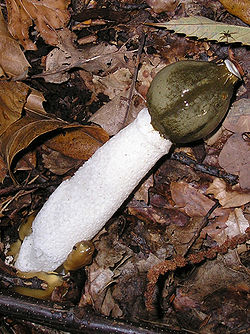| Phallales | |
|---|---|
 | |
| Common stinkhorn, Phallus impudicus | |
| Scientific classification | |
| Kingdom: | Fungi |
| Division: | Basidiomycota |
| Class: | Agaricomycetes |
| Subclass: | Phallomycetidae |
| Order: | Phallales E.Fisch. (1898) [1] |
| Families | |
The Phallales are an order of fungi in the subclass Phallomycetidae. [2]